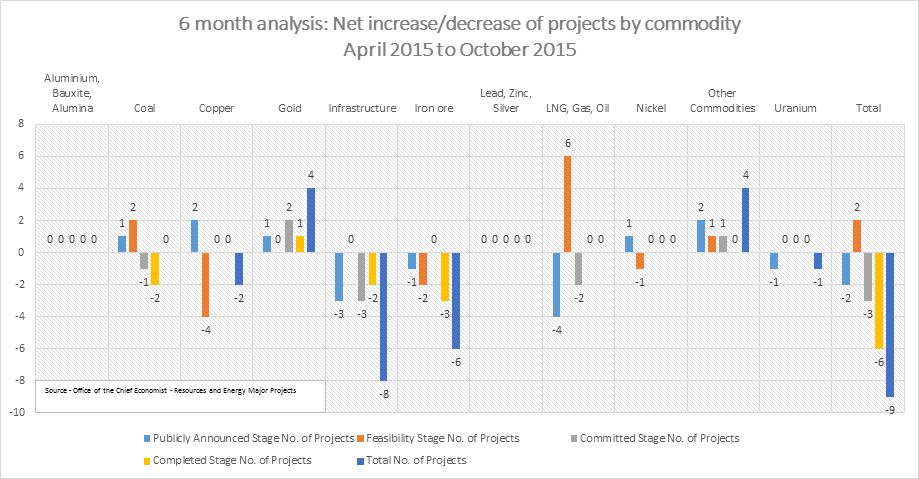AUSTRALIA’s major resources and energy project pipeline has fallen in value by $10.5 billion in the past six months to sit at $428.8bn, according to the federal government’s latest biannual analysis.
The October 2015 Resources and Energy Major Projects report, released by the Office of the Chief Economist, revealed that of the 223 major projects, 35 worth more than a combined $220bn were ‘committed’ including $195bn invested in oil and gas projects, while 127 projects worth $180bn were in the feasibility stage.
Extending the comparison over 12 months (to Oct 2014), there are 23 fewer major projects with a declined pipeline value of $21.9bn; and over the course of two years, 112 fewer projects and a declined pipeline value of $159.6bn.
AREEA senior industry policy adviser, Tristan Menalda, said the reduction in the project pipeline can be attributed in part to more than 80 projects completing construction and transitioning to production, however there is a more concerning issue at play.
“The elephant in the room is that more than 150 projects (many announced prior to Oct 2013) have been scrapped in the last two years, with a combined conservative value of $160bn+,” Mr Menalda said.
“Previously announced projects have not proceeded after being determined unviable given changed circumstances or removed from the major project listing as they have deferred/stalled for an extended period and are considered unlikely to proceed into the construction phase.”
In the short-term (six to 12 months), with investment dollars curtailed and access to capital markets restricted for borrowing, Mr Menalda forecasts the current pipeline of resource and energy major projects to remain relatively stable.
“However, we are concerned that in 12 to 24 months’ time, the damage caused by critically low levels of exploration will materially impact the pipeline of growth as fewer new resource and energy projects are identified and pursued,” he said.
“Turning to the more positive stage of the cycle, while it is extremely unlikely that the next cyclical up-swing will be of the same magnitude as the previous ‘commodity price boom’, history looks probable to repeat itself to some extent – on the proviso that Australia remains an attractive place to invest.
“When the upswing comes, we may see a re-emergence of competition for labour, equipment and inventory as investors and operators with renewed confidence seek to construct currently stalled projects at the same time.”
Minister for Resources, Energy and Northern Australia, Josh Frydenberg said the figures show the ‘resilience of the resource and energy sector’, but acknowledged the government was focused on a number of initiatives to help offset challenges that still exist.
This includes: one-stop shops for environmental approves to minimise project delays and costs; progressing free trade deals; encouraging exploration through tax offsets; expanding the Major Projects Approvals Agency and facilitating infrastructure investment; and establishing two Industry Growth Centres.
“Our energy and resources industry is a great Australian success story,” Minister Frydenberg said.
“Australia is the world’s largest exporter of iron ore, the world’s second largest exporter of coal, and we are projected to become the world’s largest exporter of Liquefied Natural Gas by 2020. The Government is committed to capturing the next wave of investment to ensure Australia continues to be a world leader in these sectors.”
Click here to view the October 2015 Resources and Energy Major Projects report.




